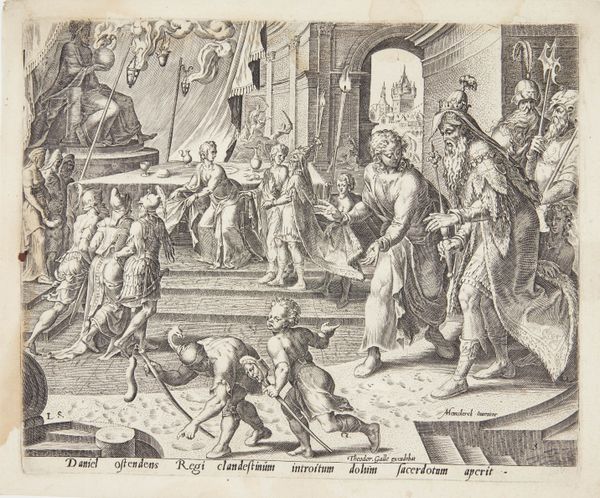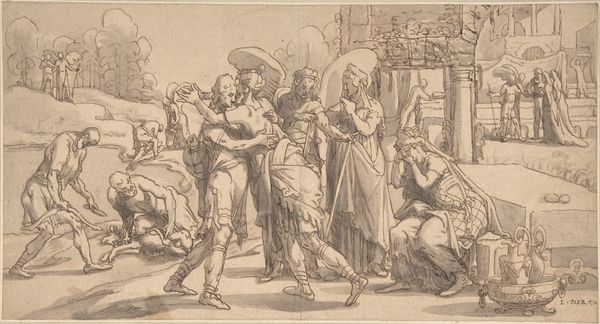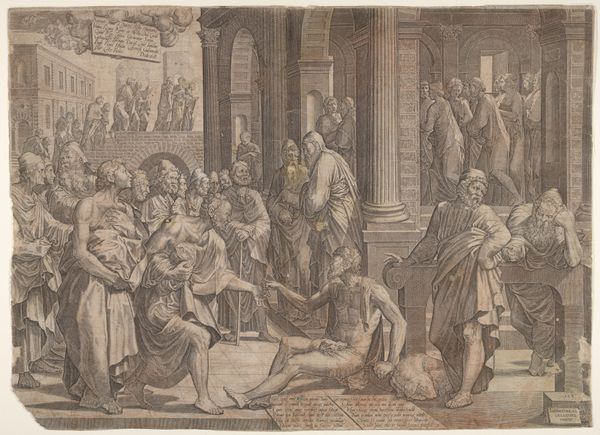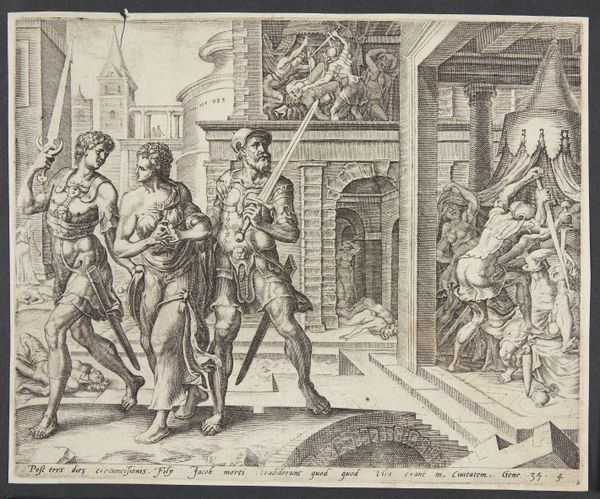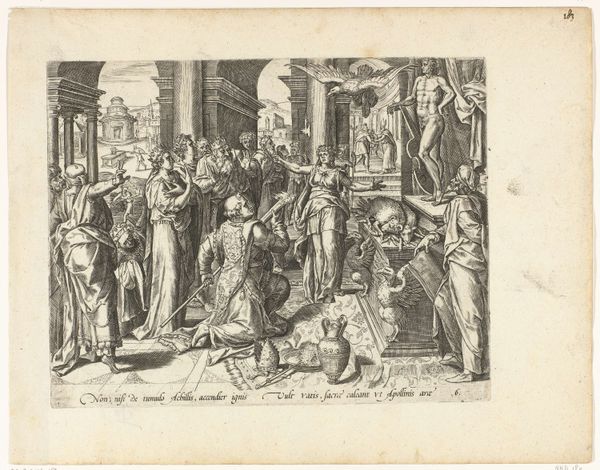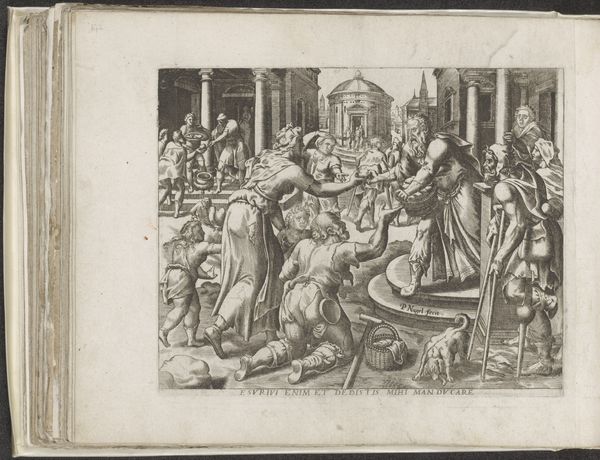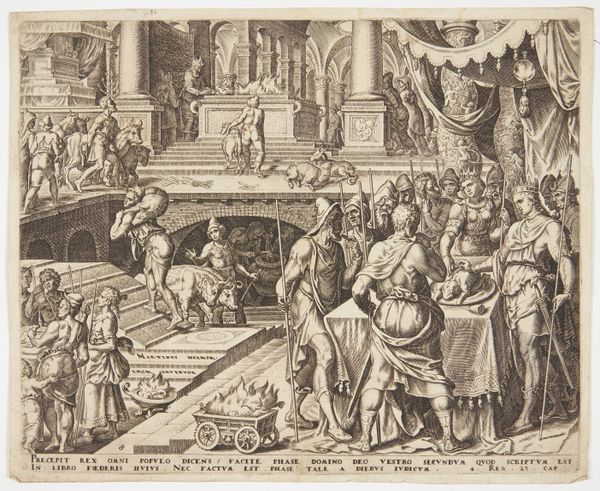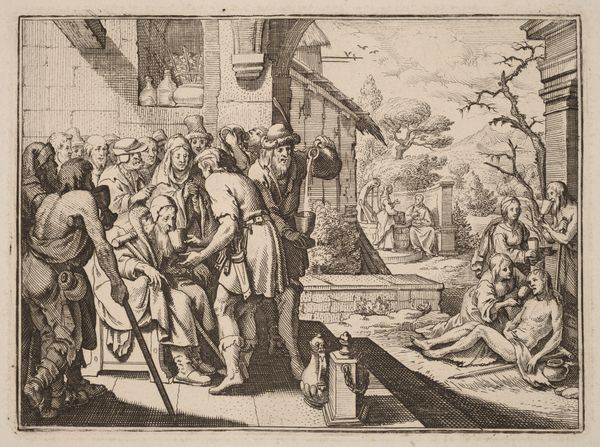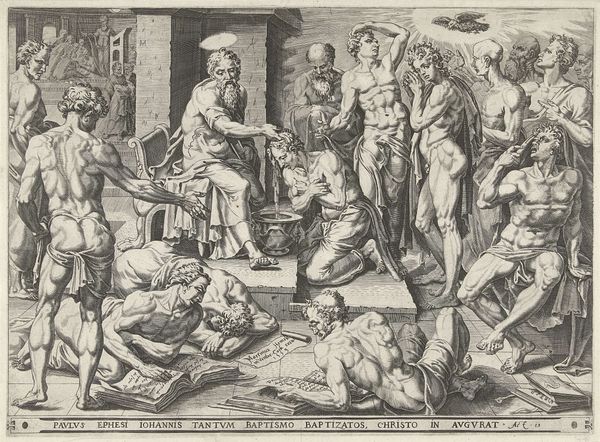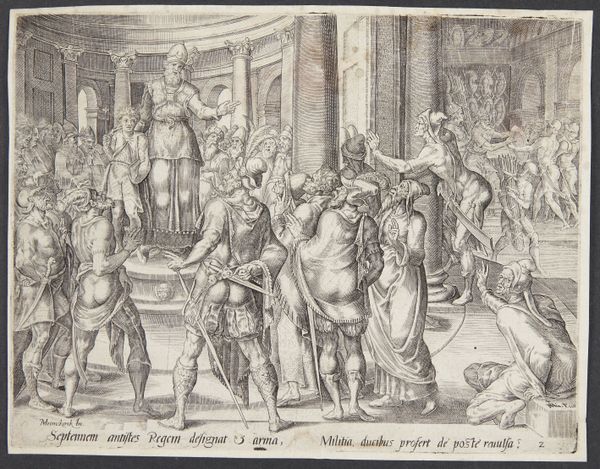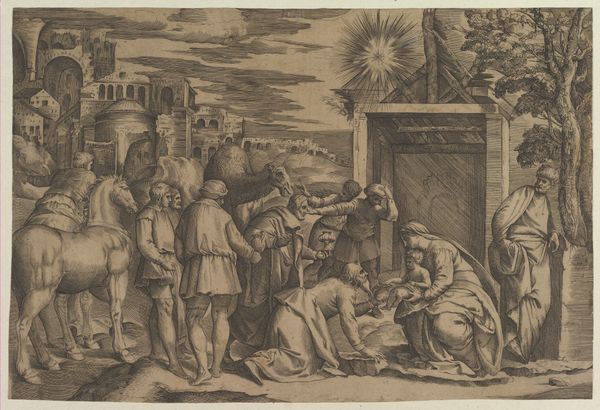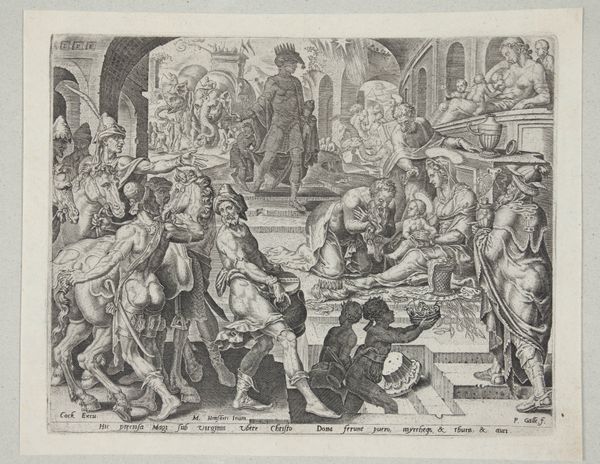
drawing, print, ink, engraving
#
drawing
#
narrative-art
# print
#
figuration
#
ink
#
northern-renaissance
#
engraving
Dimensions: 205 mm (height) x 255 mm (width) (monteringsmaal), 199 mm (height) x 247 mm (width) (plademaal)
Editor: We’re looking at Harmen Jansz. Muller's "The Circumcision of Shechem," made around 1567-1570. It's an engraving, with incredibly fine lines and details. It feels very…staged, like a theatrical tableau. What do you make of it? Curator: This print reveals the intersection of religious narrative and political ideology during the Northern Renaissance. Prints circulated widely, shaping public understanding. Editor: How so, in this case? Curator: Notice the composition. The central figures are rendered with a theatrical flair, as you observed. But this staging serves a purpose: to legitimize a specific moral viewpoint for a wide audience. The artist presents the circumcision of Shechem – a violent event of retribution from the Old Testament – in a style meant to evoke reflection, even justification. Editor: Justification for what, exactly? Curator: That's a good question. Consider the historical context. Religious conflict was widespread. Visual narratives became powerful tools in shaping public opinion. An image like this wouldn’t just illustrate a biblical story; it could be used to validate contemporary actions. How might contemporary viewers have read this narrative in light of religious and political tensions? Editor: It makes me think about how images today still shape our understanding of conflicts, and how easily they can be used for propaganda. Curator: Precisely. Examining the role of prints like this gives us insights into the socio-political function of art during the Reformation. It also gives us insights today.
Comments
No comments
Be the first to comment and join the conversation on the ultimate creative platform.
